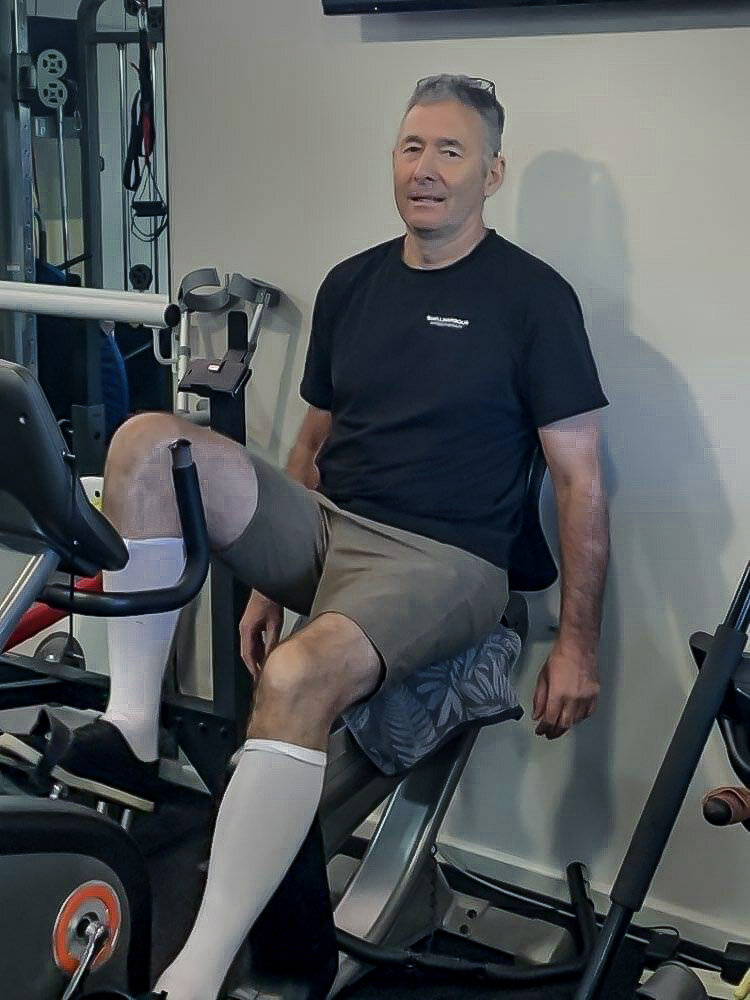COMMON FRACTURES OF THE ANKLE AND FOOT
Ankle fractures
Ankle fractures, or broken ankles, are common and occur when one or more of the bones in the ankle joint are broken. These bones are the tibia (shin bone), fibula (outer ankle bone) and talus.
Causes
Twisting injuries: common in sport or from a simple misstep or fall.
Direct trauma: such as a fall, car accident or blow to the ankle.
The mechanism of injury is important to know so your physiotherapist or doctor will ask you exactly what happened to cause the injury. A fractured ankle sustained by twisting it on a footpath is very different to an ankle fracture sustained by say, a fall off a horse and the courses of treatment may differ.
Treatment
Ankle fractures have different classifications and may require foot and ankle orthopaedic specialist opinions if your physiotherapist thinks it is necessary.
Ankle sprains can often result in avulsion fractures where a small piece of bone attached to a tendon or ligament is pulled away from the main bone. These avulsion fractures are generally small and are usually managed as ankle sprains would be with the customary RICE:
REST, ICE, COMPRESSION, ELEVATION.
Sometimes they may need to be immobilised more in a cast or boot for a few weeks.
Read more about RICE in our blog post: Soft tissue injuries: RICE? POLICE? PEACE? OR LOVE?’ ↗.
Larger fragments sometimes need to be reattached but that will be up to the specialist after reviewing a CT scan or MRI generally.
Recovery
Recovery times will differ depending on the actual injury and immediate course of treatment. Healing times can vary depending on the severity of the fracture and may take up to several months.
Follow-ups, reviews, and check-ups are important so it is imperative that appointments with the physiotherapist or specialist are adhered to.
Fractures of the 5th metatarsal (outside bone of the foot)
These fractures are common and frequently accompany ankle sprains and can be indicated by tenderness to palpation of the bone which your physiotherapist or doctor will do.
Symptoms
Common symptoms include:
pain,
swelling,
bruising, and
difficulty walking.
A plain x-ray will usually show the position of the fracture but sometimes CT scans may be a better test.
TREATMENT
Often these fractures can be treated by:
wearing a Controlled Ankle Motion (CAM) boot,
non-weight bearing for a few weeks, then
weight-bearing still in the boot for a bit longer.
A physiotherapist will fit you with a CAM boot at any of our clinics ↗.
Recovery
Healing can take several weeks due to poor blood supply in this part of the foot and surgery may be required if the fracture doesn’t heal.
The fracture of this bone that causes most problem is called a Jones fracture and can happen with things like with an increase in training or running on uneven surfaces, sudden twisting or overuse. You will probably need to see a specialist for an opinion with this type of fracture.
As already mentioned with a simple metatarsal fracture, it can be treated without surgery. However, it will require a period of immobilisation in a plaster or boot and non-weight-bearing for about 6 weeks — although the fracture can take several months to fully heal.
Toe fractures
Toe fractures, particularly of the 5th (little) toe, are common and often result from getting the toe caught on a piece of furniture.
Treatment & Recovery
If the toe is straight and the fracture doesn’t involve the joint (x-ray will determine this), you will make a good recovery although there will be some pain for a while and the toe may still swell for a few months.
If the toe is not straight, it will need to be straightened and then buddy taped to the next toe for 3 - 6 weeks. Sometimes wearing an orthopaedic shoe can help with support when walking.
Other fractures
The foot is one of the most complex parts of the body.
There are 26 bones in the foot connected by many muscles, joints, ligaments, tendons and fractures of some of these will definitely require orthopaedic specialist review such as a Lisfranc fracture which may also require surgical intervention.
Liscfranc facture
A Lisfranc fracture or injury is a fracture and/or dislocation of the midfoot that disrupts one or more of the tarsometatarsal joints, the area where the metatarsals (bones in the foot leading to the toes) connect to the tarsals (bones in the arch).
Causes
It usually occurs due to a direct blow, crush injuries or indirect twisting forces applied when the foot is pointing downwards (plantarflexion).
Symptoms
Symptoms include:
swelling in the midfoot,
bruising in the midfoot,
inability to bear weight on the affected foot, and
pain.
X-rays are used to determine fractures but an MRI may also be requested.
Treatment
If your physiotherapist is first point of contact following a foot or ankle injury, she or he will refer you on if needs be following careful examination.
A ‘crack’ does not always mean a fracture but the area of pain, mechanism of injury and thorough history taking examination are all required to determine the best treatment and management.


























